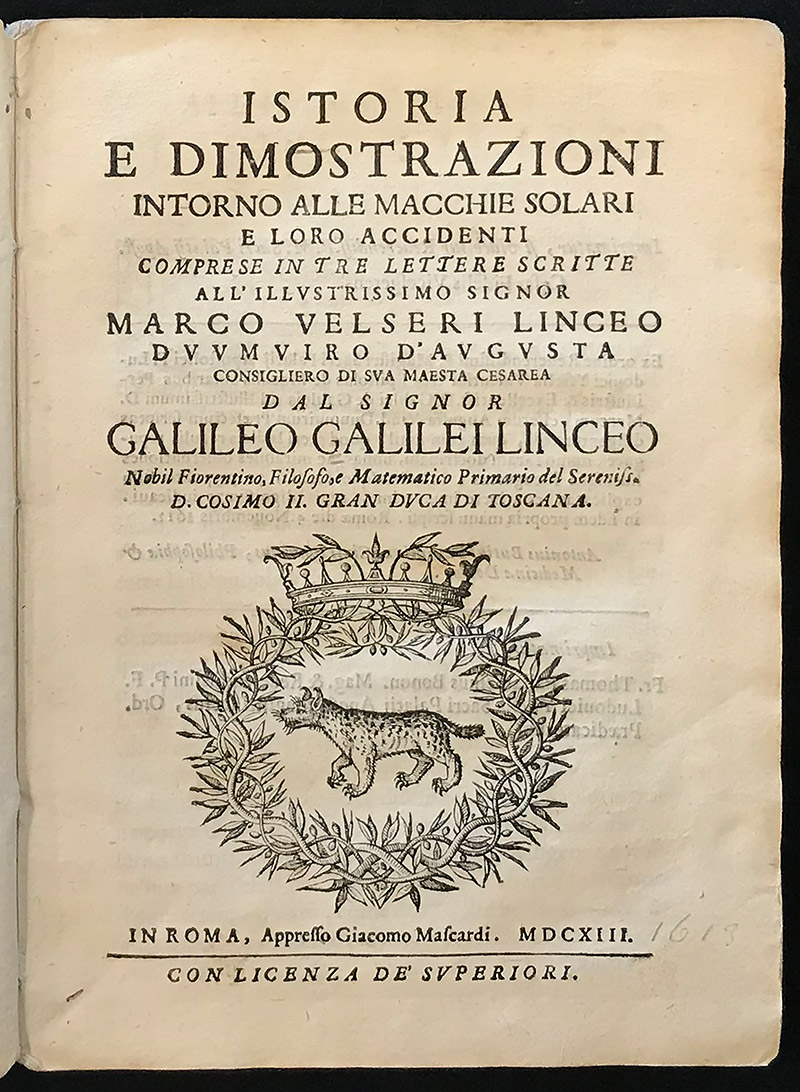Istoria

- Title page.
- Galileo Galilei (1564-1642).
- Istoria e dimostrazioni intorno alle macchie solari e loro accidenti comprese in tre lettere scritte all’ illustrissimo signor Marco Velseri Linceo.
- Rome: Giacomo Mascardi, 1613.
After reading Scheiner’s De Maculis solaribus, Galileo wrote a third letter to Welser on December 1612, which, along with the first two letters, the Accademia dei Lincei (the Lyncean Academy) published in Rome in 1613: Istoria e dimostrazioni intorno alle macchie solari e loro accidenti comprese in tre lettere scritte all’ illustrissimo signor Marco Velseri Linceo (History and Demonstrations concerning the Sunspots and their Properties, Contained in Three Letters addressed to the Lyncean Marc Welser).
Unquestionably, the debate between Galileo and Scheiner, and, eventually, between Galileo and Orazio Grassi, echoed an increasing intellectual divide within the Italian scientific community. While Galileo was a member of the Lyncean Academy, founded by Federico Cesi with the aim to challenge the predominance of Aristotelian philosophy at Italian universities, Scheiner and Grassi were typical representatives of the Jesuit scientific community of the Colleguium Romanum, which overwhelmingly rejected the Copernican interpretation of the universe.